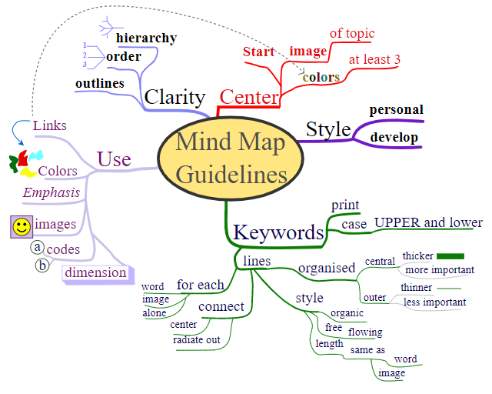Reading time: About 3 minutes
Last week’s column on mindmapping inveigled a large number of responses. One of them had me laughing. . . and thinking . . . and acting. . . Read on to find out more..
I received a cheeky and amusing email last week. It came in response to my recent column on mindmapping. Here’s how the email read: “I think that the kernel of truth/wisdom that I picked up from [you] is that if I am required to mindmap something, I will send it to you,” she wrote.
“I can put anything into either an Excel spreadsheet or a graph,” she continued, “but it literally hurts my brain to have to mindmap something. It even started to hurt when I read the word. I agree with you about everything else. I just do not enjoy either reading or creating a mindmap. Sorry.”
Well, sending an email like that to me is a bit like telling a teenager she’s not allowed to use Facebook. You’re going to get resistance! So I picked up the phone and called the woman. “I can probably help,” I told her. She was skeptical but agreed to talk.
The first thing she said was this: “When I read a mindmap, it just doesn’t mean very much to me.” OK, there was problem #1. She was trying to read mindmaps written by other people.
The most important “rule” about a mindmap — if something so free flowing can be said to have rules — is that it is personal and idiosyncratic. For example, if I wrote the phrase “wedding – heat” on my mindmap it would immediately take me back to June 24, 1989 — the day on which I got married.
It was so brutally hot (in Vancouver — a city in which we practically have a party if the thermometer breaks 70 degrees) I spent most of the ceremony sitting on the edge of my seat. I was concerned that varnish from the chair might leave a big blotchy stain on the back of my dress! That’s a personal anecdote that’s meaningful to me but totally impenetrable to anyone else based on just two words.
The message is: Don’t expect to be able to read someone else’s mindmaps. Further, don’t expect to write mindmaps that are meaningful to others. This is because you can and should fill your mindmap with personal shorthand signifying stories and metaphors that resonate for you. These little gems will make whatever you have to write richer and more interesting. They’ll also make your writing a whole lot more fun.
The woman’s next problem was also pretty straightforward. She was worried about details — like what colour pens she should be using where and how to decide which circles to link together. (See mindmap.) The whole issue had her thoroughly stressed.” Chill out,” I suggested. The purpose of a mindmap isn’t to organize — it’s to inspire.
I sometimes tell people that mindmapping is a bit like “vomiting” onto the page. (Bet you’d never expected to see the words “inspire” and “vomit” sitting so close together!) Mindmapping is not about being neat or tidy or organized. It’s simply about getting everything out of your head and onto the paper.
The third issue raised by the would-be mindmapper was also easy. How could she possibly mindmap her doctoral dissertation? Here’s the key: You can mindmap the same topic more than once. Different mindmaps suit different purposes. For example, in starting a really big project like a book or a dissertation, I’d do an initial mindmap to brainstorm my central idea. Then I’d do further mindmaps on smaller sections such as chapters or even portions of chapters.
Heck, I even did two mindmaps for this brief newsletter. One was on the column as a whole. The second was to eliminate an egregious cliché (“like waving a red flag in front of a bull,” which I replaced with “like telling a teenager she’s not allowed to use Facebook” — a far more interesting metaphor that occurred to me within 30 seconds of mindmapping!)
One final point: remember that you never have to finish your mindmap. As soon as you have the “aha” experience — that feeling when you know what you want to write about, or how to structure your piece, then you should put your mindmap away and start writing.
I urge you to give mindmapping an honest try. It’s a little piece of magic.


